マルセイユへの旅「歴史博物館」History Museum of Marseille2017/12/14
History Museum of Marseille(Japanese / English)

マルセイユ歴史博物館は、ビューポートの証券取引所(センターブールス)の建物に隣接し、映画『渡洋爆撃隊』にも使われた場所。街の東西を結ぶ大通りには、the Museum of the Roman Docksもある。
来館者は、交易や港の発展に関する展示品から、マルセイユの歴史を知ることができるだろう。旧石器時代から始まり、現在、そして未来と続く時空の旅を体験。展示品一つ一つから、その製作者の性別、有名・無名を問わず、当時の人たちの息吹きが感じられる。いにしえのマルセイユの人々の生活や物語がそこはある。
-マルセイユが「マルセイユ」になる以前 紀元前60,000~600年
マルセイユという都市は2,600年前に築かれたが、60,000年前(中期旧石器時代)から人々はこの地で生活を営んできた。
博物館では、紀元前約27,000~18,000年に描かれたコスケール洞窟の壁画や街並みの変化を観ることができる。
-ジプティスとプロティスの伝説 紀元前600~380年
ジプティスとプロティスの伝説にあるように、マルセイユの歴史は、ギリシアとガリアの2つの文化の出会いから始まった。紀元前600年前頃、小アジア(現トルコ)のギリシア人が「ラシドンの入り江」を見つけるために、ポカイアを出発したこと始まる。彼らはこの地に入植し、マルセイユが誕生した。
-ピュテアスの世界 紀元前390~49年
古代ギリシアの影響を残す港町マルセイユは、地中海貿易の繁栄を担ってきた。出土品のワインや油を保存する陶器からも、その発展を知ることができる。
※ピュテアス- ギリシアの地理・天文学者
-証券取引所ブールの建造 紀元前600年〜18世紀
1983年に開館したマルセイユ歴史博物館は、「ヴェスティージュ庭園の遺跡」としても知られている。この遺跡は、1967年のブール証券取引所建設中に発見され、フランス初となる大規模な都市建造物の発掘となった。
ローマ通りに面している庭園には、ギリシア時代の城壁が残されている。また、ビューポートでは、貿易船も発見された。
厳かな門をくぐり、遺跡に囲まれたローマ通りを抜けると、町の中心へと続く。
-マッサリアから「マッシリア」へ 紀元前49年〜紀元309年
紀元前49年、ユリウス・カエサルの征服により、ポカイア(古代ギリシア領)はローマの領地になった。ギリシアの特徴に加え、公共浴場や広場といった古代ローマの様式が癒合しながら、ビューポート地域は発展した。ラシドンの北側の海岸には大きな倉庫が建てられ、その一つがMuseum of the Roman Docksとして残っている。
※マッシリアは、マルセイユの古代名。
-古代から中世へ 紀元309〜948年
古代ギリシアとローマの支配の後、キリスト教の教えが広まった。サン・ヴィクトール修道院、マラベール通りの墓地、石棺は、その信仰を表している。
地中海交易の繁盛と共に、建物や生活水準も向上していった。
-中世のマルセイユ 948~1481年
長きに渡るブルグント王国のマルセイユ統治後、ルイ1世・ダンジューがこの地を支配し、そして最終的にフランス王国に併合された。サン・ヴィクトール修道院とマルセイユ大聖堂が人々の生活の中心となる。13世紀になると、リチャード1世率いる第3回十字軍がマルセイユまで遠征した。
-フランスのマルセイユ 1481〜1596年
1481年のシャルル5世・ダンジューの死後、マルセイユはフランス王国に併合。王国は、オスマン帝国との交易から利益を得ようと考えていた。また、イタリアで始まったルネサンス(文芸復興)が、マルセイユやプロヴァンスにも伝わる。
-マルセイユと太陽の王 1599~1725年
ルイ14世は、貿易の拠点としてマルセイユを重要視していた。1660年の訪問時の経済的決断は、それ以降の海洋貿易と都市開発において大きな転換となった。1666年までに都市面積は3倍に拡大したが、1720年には大流行していたペストによって人口の半分が命を落とした。
-啓蒙思想から革命へ。世界への扉、マルセイユ 1725〜1794年
1720年のペスト流行後は、外国やプロヴァンスなど他地域からの人々の到来によって、マルセイユは目覚ましい経済的復興を遂げた。更に、航海術の発達はマルセイユの国際化を促した。1726年に設立したAcademy of Literature, Science and the Artsは、その後の啓蒙思想や、他の地域での革命にも大きな影響を与え、マルセイユの義勇軍はパリのフランス革命にも参加した。フランスの国歌は、その時彼らが歌っていた「ラ・マルセイエーズ」である。
-港、工業、そして人々 19世紀のマルセイユ 1795~1905年
アルジェリアがフランス領になってから、マルセイユの人口も劇的に増加した。1830年13万人だった人口は、1905年には55万人に増えた。
フランス第二帝政のもと、鉄道整備、ジュリエットの開港、北部の都市開発、工業化が進められた。アルプス山脈地域やイタリアから職を求めて移り住む人々も多くいた。魅力的な都市マルセイユは、金融都市の拠点として成長した。具体的には、証券取引所、裁判所、Prefecture de Marseille (県庁)などの行政や金融施設や、Le Palais des Arts(芸術の宮殿)やロンシャン宮といった学問の拠点として発展した。また、ノートルダム・ド・ラ・ガルド寺院、マルセイユ大聖堂などの宗教的重要施設もある。ボレリー公園など庭園を楽しむこともできる。
-南路へ続くマルセイユ 1905~1945年
20世紀初頭、フェリー路面電車の開通や道路整備の都市化が瞬くまに進められた。1918年以降、アルメニアをはじめとする海外からの移民を受け入れてきた。フランス植民地帝国の製品を加工する工場での職を求めてやってくる者もいた。両大戦間期、マルセイユは全体主義の隆盛や経済危機を経験しながらも、学問と芸術の分野においては躍進した。マルセル・パニョルの映画、ヴィンセント・スコットの文学などが挙げられる。第二次世界大戦中、この港街はドイツ軍に対してのレジスタンス(抵抗運動)の重要拠点となった。しかし、1942年11月、ドイツ軍はビュー・ポールの北側を破壊し、占領した。
-多彩な都市、マルセイユ 1945~2013年
第二次世界大戦で壊滅した街の復興はたやすいものではなかった。1962年、フランス植民地帝国の崩壊後、アルジェリアから多くの移民がやってきた。
1955年から75年にかけて、人口は増加し、北部の開発は進み、都市化は丘陵地帯まで拡がった。この地中海の港町は、産業、文化、観光業においても発展を遂げた。
2600年の間、地形に恵まれた都市マルセイユは、常に新しい魅力を発信している。




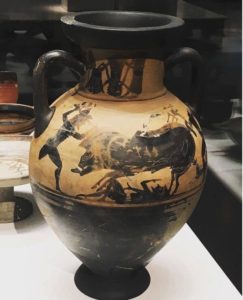
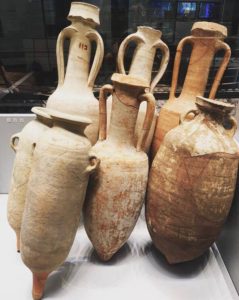

**************************************
The History museum of Marseille, located at the heart of the Centre Bourse, a trading centre close to the Vieux-Port, is one of the sites of the historic Road of Marseille, the patrimonial axis which crosses the old city from East to West, bordered by the Museum of the Roman Docks.
The purpose of the architectural design is to create a close link between the city, the museum and the archeological site at the Bourse.
Visitors can learn about the history of Marseille by following a trail which links its maritime and port history. Starting with a visit to Cosquer cave and ending with the Marseille of today and tomorrow, visitors are invited to embark upon a 2,600 year journey. These collections recount the lives of the women and men, famous or unknown, who have been involved in making of the city’s history. The museum gives its visitors the opportunity to immerse themselves in the living and tangible history of the city.
– Marseille before Marseille, 60,000 to 600 BC.
The city of Marseille was founded over 2600 years ago, but the earliest human settlements in the Marseille basin date back to the Middle Paleolithic period (60,000 years BC).
You can see the evolution of the landscape and the Cosquer cave, rich with thousands of paintings and engravings, from around 27,000 BC to 18,000 BC.
– The legend of Gyptis and Prôtis, 600 to 380 BC.
Marseille history is built around a legend about the meeting of two cultures, Greek and Gallic. Around 600 BC, Greeks from Asia Minor, now Turkey, left Phocea to found a city on the Lacydon inlet. The first settlement was established. Marseille was founded.
– The world of Pythéas, 390 to 49 BC.
Marseille is a hellenistic city and is at the peak of its prosperity due to trade. It plays a major role in the distribution of Meditteranean goods as testified by the jars (amphores massaliètes) used to hold wine and oil.
– The archeological site at the Bourse, 600 BC to 18th century.
Opened to the public in 1983, this site, known as Jardin des Vestiges (garden of archeological remains) presents the findings of the first major urban archeological dig in France.
In 1967 the construction of the Centre Bourse revealed the remains and was classified as an historic monument.
The site developed around the Roman road, the Greek ramparts, and the Old Port, where the biggest Roman maritime wreck was found.
The Roman road, surrounded by burial terraces, entered the city, through a monumental gate.
– From Massalia to Massilia: the Roman city, 49 BC to 309 AD.
Conquered by Julius Caesar in 49 BC, the Phocean city became Roman, but retained its Greek character. A thermalbath, a theatre and a paved forum were built.
The old port area developed and large warehouses were set up on the northern shore of the Lacydon. The one that remains is preserved in the museum of the Roman Docks.
– From ancient city to Mediaeval town, 309 to 948.
The rise od Christianity in the Late Antiquity followed the Greek and Roman civilisations. New buildings such as the shrine of Saint-Victor and the burial church in rue Malaval, housing a venerate tomb, are exemples of this faith.
The development of housing and the activity of the port were an indication of the intensive trading throughout teh Mediterranean sea.
– Marseille in the Middle Ages, 948 to 1481.
In that long period Marseille was ruled by the Kingdom of Burgundy, then after by Louis of Anjou and then finally became part of the KIngdom of France. The inhabitants were under the leadership of the Abbey of saint-Victor and the Cathedral of la Major. In the thirteenth century the town was involved in the third Crusade of Richard the Lion Heart.
– And Marseille becomes French, 1481 to 1596.
In 1481 on the death of Charles V of Anjou, marseille was united with the crown of France.
As far as the kings of France were concerned, the port of Marseille was an asset which they intended to take advantage of trading with the Ottoman Empire.
The Italian Renaissance reached Marseille and Provence.
– Marseille and the Sun King, 1599 to 1725.
The King of France has great maritime ambitions for Marseille.
His arrival in Marseille in 1660 marked a turning point and was accompanied by economic decisions and major developments in the port and in urban areas.
The expansion in 1666 tripled the surface area of the city, but this show of strenght was stopped by the last plague epidemic in 1720 which killed half of the population.
– From enlightnment to Revolution: Marseille an international port, 1725 to 1794.
After being disrupted by the plague in 1720, Marseille’s commercial boom quickly resumed, mainly due to a huge influx of foreigners and people from elsewhere in Provence.
Trade developed even more because the art of navigation was making significant progress; the port opened to the Oceans. The Age of Enlightenment flourished in marseille mainly thanks to the Academy of Literature, Science and the Arts founded in 1726. As in other large cities, the French Revolution had a significant impact. The volunteers from Marseille supported the revolution in Paris. Therefore, the French national anthem was called the Marseillaise.
– Port, industry and men: Marseille in the nineteenth century, 1795 to 1905.
After the capture of Algiers by French troops, the population of Marseille increased dramatically, rising from 130,000 inhabitants in 1830 to 550,000 in 1905.
With the Second Empire there came a surge in urban planning projects: expanding the railways, creating new docks at la Joliette, in the north and major urban development, phasing in of industrial suburbs, where the greatest numbers of workers were from the Alpine valleys and Italy. Marseille became an attractive citty. At the same time Marseille acquired new seats of power (the Stock Exchange, the Palace of Justice, the Préfecture…), places of learning (le palais des Arts, le palais Longchamp), religious buildings (Notre-Dame-de-la-Garde,the Cathedral of la Major) and parks and gardens (parc Borély).
– Marseille, gateway to the south, 1905 to 1945.
At the start of the 20th century Marseile is a modern city marked by the opening of the ferry bridge, the development of the tramway and of cars. Migration resumed after 1918, along with refugees driven from their countries (Armenians,…) or with people who wanted to work in the factories which transformed the products from the colonial Empire. The period between the two World Wars was marked by the rise of totalitarianisms and the economic crisis. Despite this, MArseille experienced an intellectual and artistic boom centred upon figures like, Marcel Pagnol (cinema), Vincent Scotto (litterature)… The Second World War marks durably the inhabitants. Marseille became an important centre of resistance, but after November 1942 it was brutally suppressed by the Germans who destroyed teh northern districts of the Vieux-Port. In 1944, the liberation of the city by the African Army was preceded by an uprising by the people.
– Marseille, a singular and a plural city, 1945 to 2013
The city did not recover very easily from the destruction of the Second World War. In 1962 Marseille took in large numbers of repatriates from Algeria after the desintegration of the colonial Empire.
Between 1955 to 1975 the population grew, the northern districts were created and urbanisation spread up into the hills.
Marseille, port of Europe and of the Mediterranean Sea is transformed. Factories give way to services and to cultural and tourist activity.
This 26 century old city with its extraordinary geographic position, has gained new appeal in Europe, based on the development of tourism, urban planning with the Euroméditerranée project and its cultural life.
Le Mole Passedat Restaurant: les aperos du Mole-MuCEM, Marseille.2017/11/29
Le Mole Passedat Restaurant: les aperos du Mole-MuCEM, Marseille.



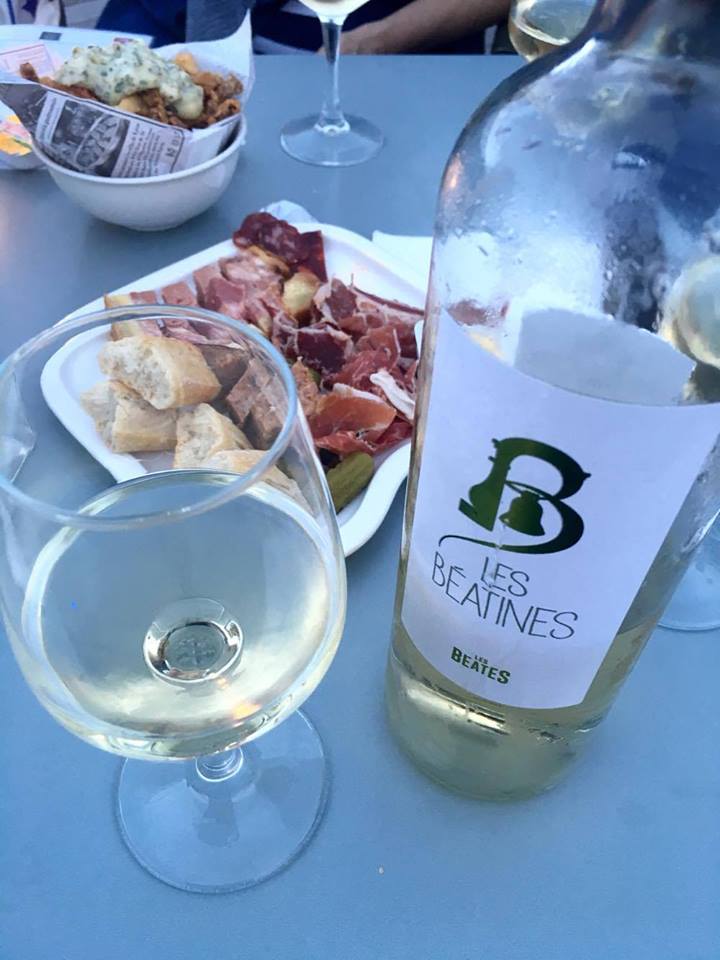
Perched on the roof of the MuCEM, Le Mole Passedat offers an unbeatable view of the Mediterranean and Marseille Cathedral La Major.
Cuisine and culture according to Gerald Passedat-
Le Petit Nice’s three star chef, Gerald Passedat, wanted to partner with the MuCEM because food is an integral part of Mediterranean culture.
To create Le Mole Passedat, the chef devised multiple spaces dedicated to its discovery: a restaurant with a panoramic view and a terrace on which to savour his cuisine, a bistro serving its own variations on mezze, food stands serving quick and tasty bites, a cafe at Fort Saint-Jean for traditional cuisine, a cooking school and a Mediterranean kitchen garden. Varied culinary offerings are preserving the spirit of the chef’s cuisine:
– Mediterranean cuisines
– Seasonal produce
– An immense flavour palette to discover
Les aperos du Mole will be held every thursdy of June and July on the terrasse of the restaurant. Selection of Tapas, dj set, from 8:00pm.
Booking essential 0033491191781
The MuCEM-
In Marseille, the Mucem stands out as a great museum dedicated to the Mediterranean.
What makes the Mucem so unique is that it recounts, analyses and sheds light on the ancient foundations of this cradle of civilization and the tensions running through it since that time, all in the same place and with the same passion. Also that it is a platform for discussions about Mediterranean issues.
Both its exhibitions and its cultural programmes offer a multidisciplinary vision that combines anthropology, history, archaeology, art history and contemporary art to show the public the multiple facets of the Mediterranean world and its ongoing dialogue with Europe.
Its roots:
As the first museum devoted to Mediterranean cultures, the Mucem is a completely novel structure. The product of the metamorphosis of a major societal museum – the Museum of Popular Arts and Traditions, created in Paris in 1937 –, it represents the first real conversion of a museum from national to regional. The Mucem Museum of the Civilizations of Europe and the Mediterranean opened in Marseille in June 2013. By the following year, it had joined the ranks of the 50 most visited museums in the world.
The Mucem encompasses three sites. Along the sea, at the entrance to the Old Port, the J4 building (Rudy Ricciotti’s and Roland Carta’s symbolic architectural creation) and the Fort Saint-Jean, a fully restored historical monument, are the perfect embodiment, with their two footbridges, of the idea of building a connection between both shores of the Mediterranean. They host major exhibitions and artistic and cultural programming events. In town, in the Belle de Mai district, the CCR Centre for Conservation and Resources houses the museum’s collections. This unique grouping allows the MuCEM to offer a multitude of cultural activities.
The Mucem is interested in the contemporary aspects of European and Mediterranean civilizations. Its collections include more than 350,000 objects, as well as a large assortment of documents, comprising a total of a million works of art, documents and objects, an extraordinary treasure trove that is promoted by means of an ambitious programme of permanent and temporary exhibitions.
The 21st century museum aims to be a real cultural centre covering a vast swath of history, making use of all the disciplines of the humanities and social sciences and displaying artistic expressions from both shores of the Mediterranean.
A Mediterranean crossroads:
The museum’s goal is to promote Mediterranean heritage, take part in the creation of new exchanges in the region and, during this period of profound upheaval, help to lay the foundations for the Mediterranean world of tomorrow. In Marseille, the Mucem is a place where, on both a national and an international scale, people can come to gain a better understanding of the Mediterranean.
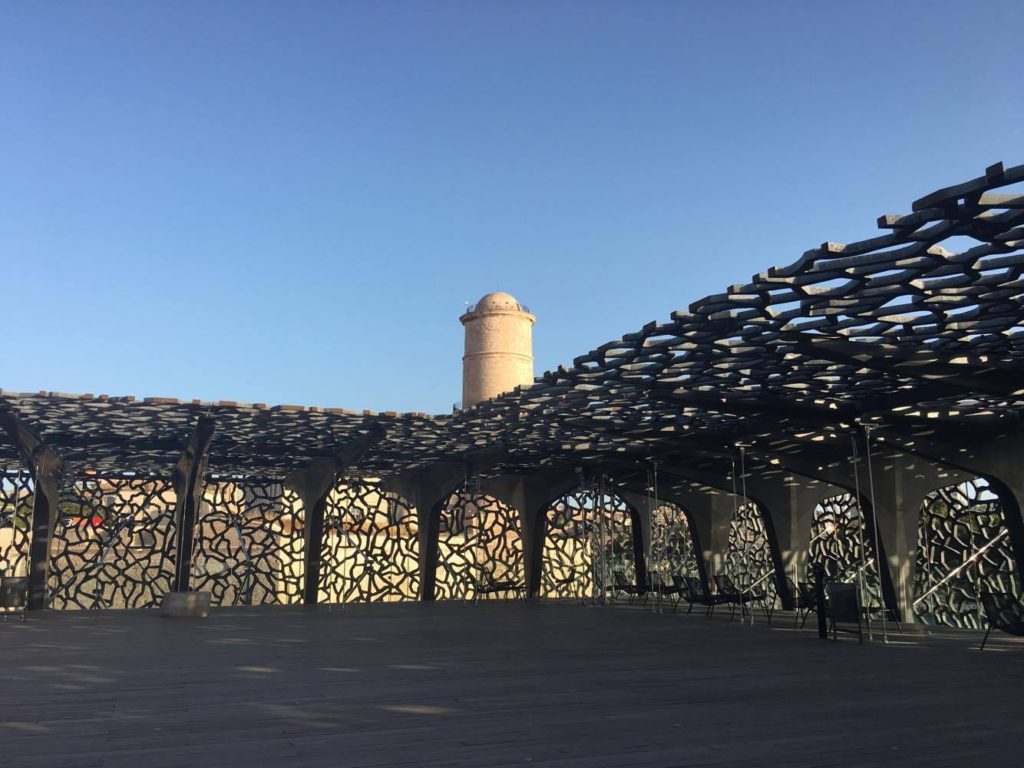


Adress:
MuCEM
7 Prom. Robert Laffont, 13002 Marseille
本日営業 · 10時00分~22時00分
LeMole Passedat
1 Esplanade du J4, 13002 Marseille
本日営業 · 12時15分~14時30分, 19時30分~22時30分
Provence reds: know your vintages2017/11/21
Provence reds: know your vintages

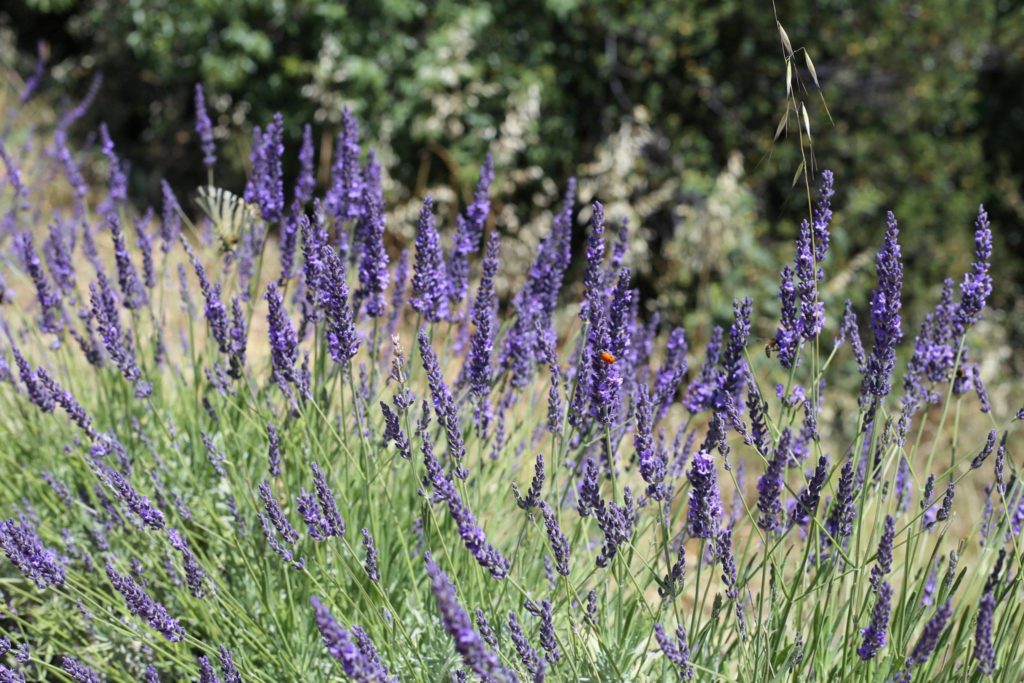

2016: A smaller vintage than the two preceding years, but well balanced with fresh fruit. Looks promising.
2015: Quality is exceptional; Bandol reds oustanding. Volumes a little down.
2014: Quality better than growers feared, after a cooler than usual summer and storms.
2013: A cool, slow spring, warm summer and severe hail storms. Good vintage for fresh, delicate whites and roses, but reds are light to mid-weight, largely not for long storage.
2012: Fresh, elegant roses. Concentrated whites with marked acidity, best will keep. Restrained, balanced reds, Coteaux Varois Syrah stands out. Volumes down by 20%.
2011: Elegant roses, well-defined reds, especially Coteaux Varois&d’Aix. Bandol successful, structured; best will need cellaring.
Decanter magazine, September 2017.
Art-Cade Gallery, Marseille-Former bath house “Les grands bains douches de la Plaine”2017/11/20
Art-Cade Gallery, Marseille-Former bath house “Les grands bains douches de la Plaine”




The ART-CADE Association was founded by Anee-Marie Pecheur and Jean Baptiste Audat in 1993 and is located at the very heart of the city of Marseille. It is a place where people can meet, exchange and experiment on the theme of art exhibitions and various cultural events. This former public baths’ establishment has now become a well-recognized exhibition center and year after year hosts projects of emerging and established artists.
Art Cade is a non-profit organisation which conducts an overall project in its very special location, bringing into play contemporary works of art that call into question the very process of creation.
Being situated in the city of Marseille signifies a deep involvement of the Association with young artists, and makes it possible to offer an open space, encourage encounters and develop a place for critique. Since its foundation in 1993, Art cade has brought together guest artists from different countries.
The artists who founded the Association intended to set up an active platform, stating modernity composed of various currents and different worlds.
The challenge has been successful over the past twenty years: music, performances, readings, culinary art, exhibitions, urban walks, exhibition beyond the city walls(Archist nomadic galleries), all disciplines: photo, video, pinting, intallation…
On view now: Sepand Danesh.
The researches of French-Iranian artist Sepand danesh are gathered in a world of silences where each gesture and each detail offer us a free reading. Every work confesses the evidence of a loneliness that is not imposed but ruled by the own history of the artist, whose family fled Iran after many years of war. Fed with a brand new french culture, and a new language he had to learn through books, Sepand Danesh applied himself to play with his double identity. From the references to the famous French writers to the notions of occidental iconography, he does not put aside the memories of Iranian life during the time of the last Chah. A work and a method lengthily considered determine the series of the paintings where the corner is the main theme. The corner illustrates the child punishment but also the inability to move forward. It is a place to commune with yourself, set or not. Some carefully thought iconographic elements nourish these vertical heights and suggest a very different interpretation to each work.
Finally, a series of little drawings realized day after day, for years, allow the artist to put ideas on a page, to tell his story and to remember-essential action for the one who escaped and had to readjust himself to a new culture.
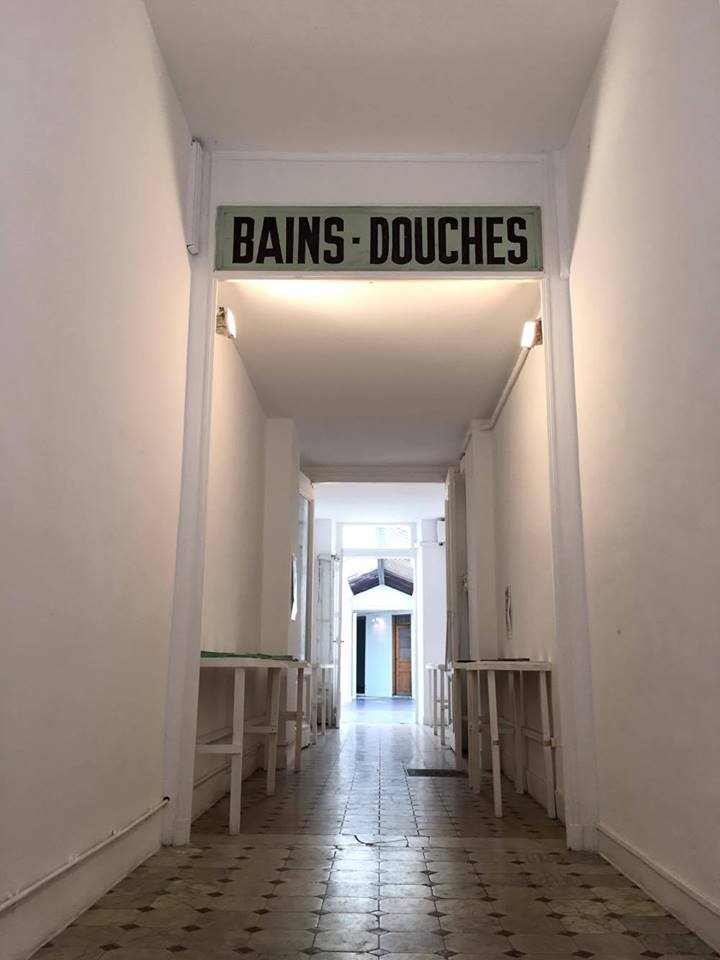

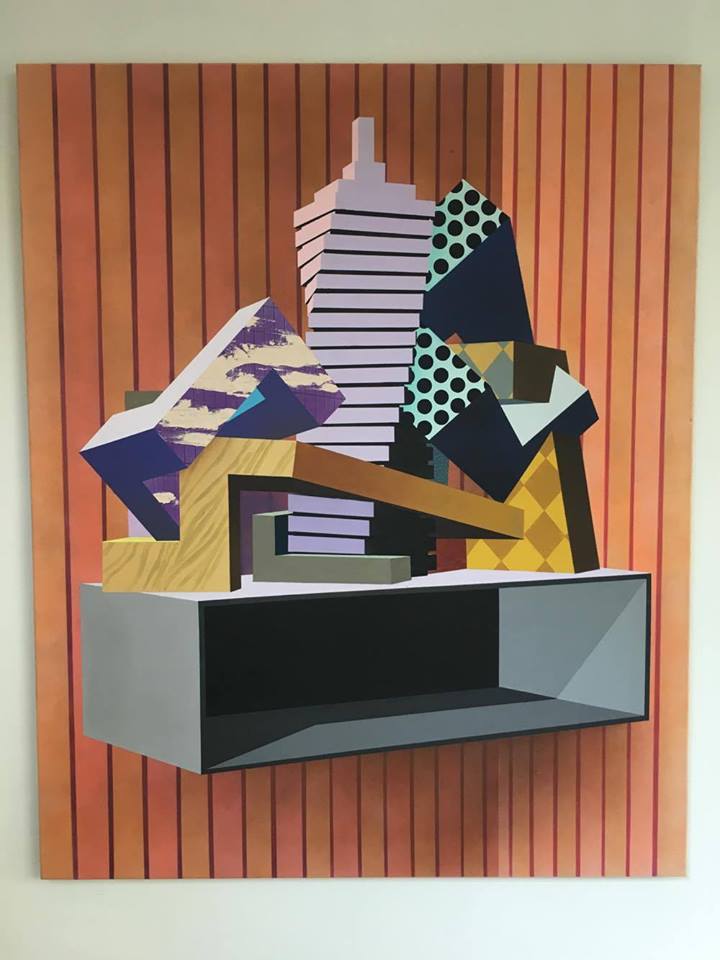

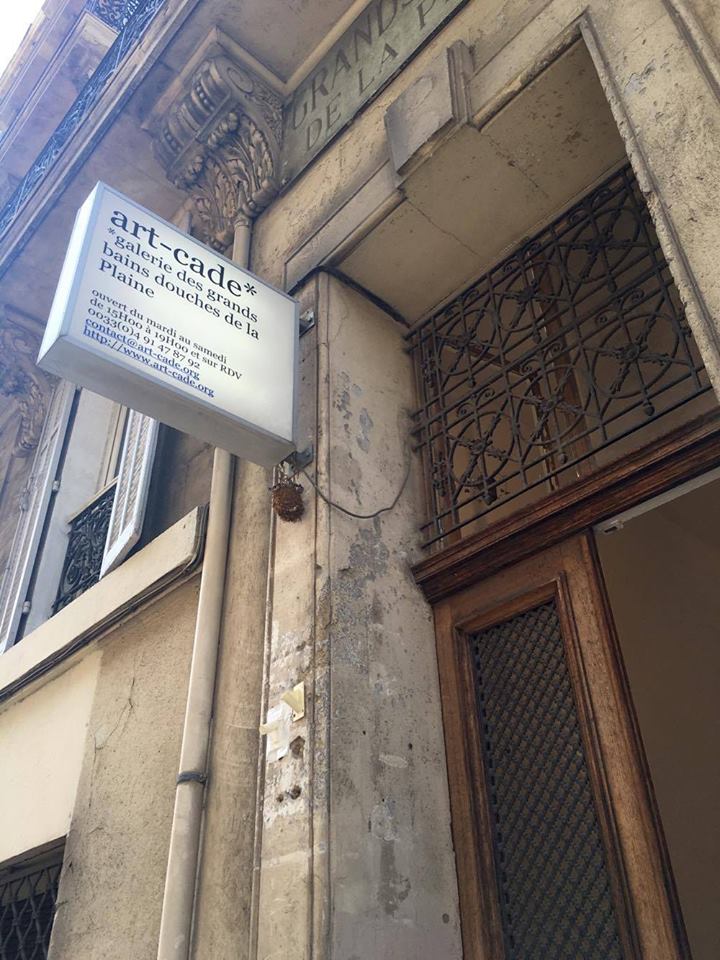
Art Cade Gallery
35 Rue de la Bibliothèque, 13001 Marseille
本日営業 · 15時00分~19時00分
+33 4 91 47 87 92
Poulpe,Octopus,Tako,Cephalopode- The story of a famous Provence dish-2017/11/16
Poulpe,Octopus,Tako,Cephalopode- The story of a famous Provence dish-

Where does the name ‘poulpe’ come from? At the beginning of the sixteenth century, this word meant a polyp of the nose (stern), so nothing to do with an octopode! But … shortly after, the word was taken up in zoology, according to Provençal ancient “poupre”, from the Latin “polypus”. The word “pieuvre” also comes from the Latin polypus. It is a more recent word than ‘poulpe’. It is Victor Hugo who introduced it in the French language (see his novel ‘Workers of the sea’), the word being borrowed from the vocabulary of Anglo-Norman islands fishermen (Guernsey in particular).
Phoenicians use octopus in art, for the Greeks it is a symbol of ruse, they also discovered the tincture “pourpre”.
There may be a link between the Kraken, the creature of Poseidon and Perseus, who kills him after cutting off the head of the gorgon Medusa. Medusa being assured of her immortality, by the lightning of her eyes. Perseus won the battle with his shield and sword.
Back to the scents of the kitchen!
It’s very common for a foreigner in Japan to be asked if they eat octopus in their homeland.
Looking closely in the plates of South of France you will find many ways to eat it!
Octopus salad, “Daube de poulpe”(octopus stew), grilled. Seasoned with garlic, parsley, wine..
But what’s best than a grandma recipe!
Here is Jo’s recipe, italian from Piemonte who came to live with her family in Provence when she was 6.
Simplicity at its best! The octopus is cooked in olive oil, garlic, pepper, espelette spice, thyme, rosemary, fenel, laurel. Add water and let it cooked on a low fire for an hour. Delicious with aioli(a Provencal dish made of mayonnaise and garlic and served with boiled vegetables) or simply on some grilled bread or potatoes. To pair with a rose or a white Coteaux d’Aix!






















